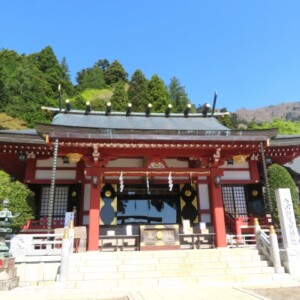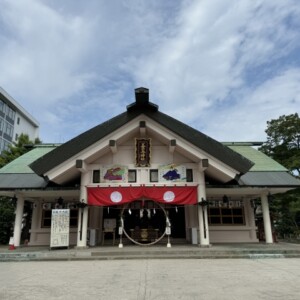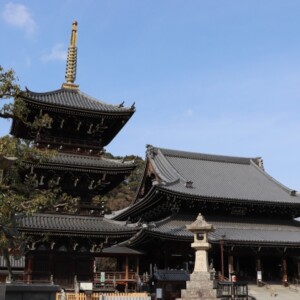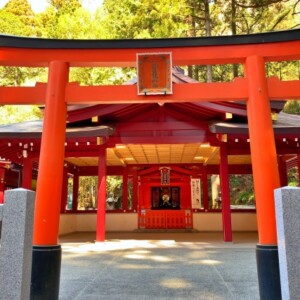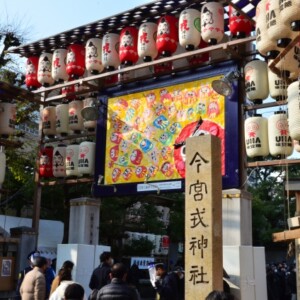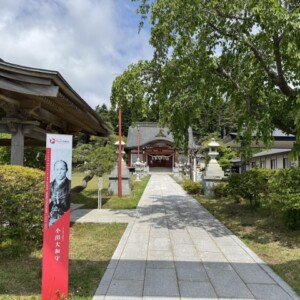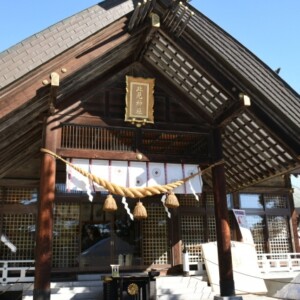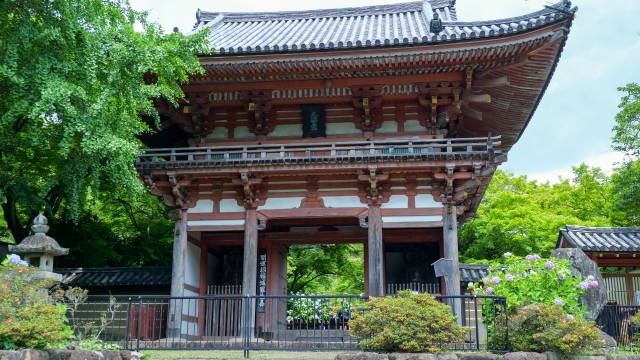
Kyuan-ji Temple|A complete guide to the charms of this historic temple, its beautiful garden, seasonal flowers, and visitation information
Quietly nestled in the mountains of Ikeda City, Osaka Prefecture, Kyuan-ji Temple is an ancient temple of the Koyasan Shingon sect of Buddhism with a history of nearly 1,300 years. The temple was founded in 725 by Gyoki at the behest of Emperor Shomu (725). The predecessor of the temple is said to be Anyoin, where Kukai (Kobo Daishi) stayed during the Tencho period (824 – 834) and flourished as a center for Shingon esoteric Buddhism. The temple is known for its beautiful tower gate, designated as an important cultural property, and its grounds decorated with seasonal flowers, and is especially loved by many visitors as a temple of flowers, which is talked about for its “ajisai ukabe” (hydrangea flower garden).
Outline and basic information about Kyuan-ji Temple
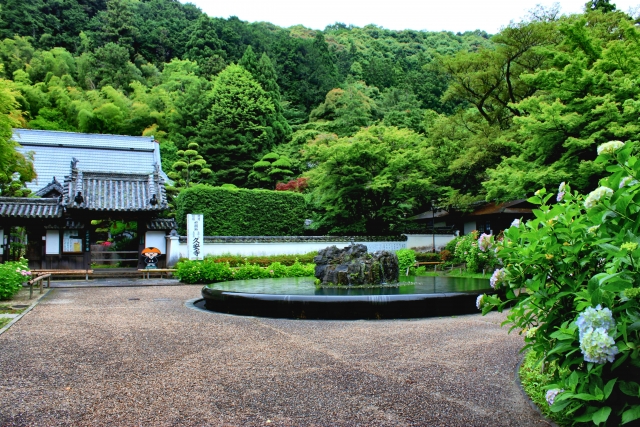
Kyuan-ji Temple is a temple of the Koyasan Shingon sect located in Fuseo-cho, Ikeda City, Osaka Prefecture. The temple was originally called “Anyoin” founded by Gyoki, and was later named “Kyuan-ji” in 1455, when it became an imperial villa for Emperor Konoe. The temple grounds cover a vast area of about 30,000 square meters, and are designated as the 12th sacred site of the Flower Temple in Kansai because of the variety of flowers and trees that can be enjoyed throughout the four seasons.
History and Origin
The temple was founded by Gyoki Bodhisattva in 725 (Shinki 2), and was formerly known as Anyoin Temple, where Kobo Daishi stayed during the Tencho period (824-834) and flourished as a center for esoteric Shingon Buddhism. Gyoki Bodhisattva was a high priest of the Nara period (710-794), and is known as the person who was involved in the construction of the Great Buddha at Todaiji Temple at the request of Emperor Shomu. Later, in the early Heian period, Kukai (Kobo Daishi) stayed in this area and developed it as a center for Shingon esoteric Buddhism.
In 1140 (Hōen 6), Anyōin was reduced to ashes, but the statues of Yakushi Nyorai and Amida Bodhisattva escaped damage, and the principal image of Senju Kannon (the Goddess of Mercy) is said to have flown above the rocks and shone forth. Later, in 1145, the temple was rebuilt as a prayer hall at the request of Emperor Konoe, and Kenjitsu Shonin expanded the main hall and other buildings on the temple grounds and renamed it “Kyuan-ji Temple.
It is said that during the Azuchi-Momoyama period, Toyotomi Hideyoshi held a tsukimi (moon-viewing) tea ceremony when he visited the temple.
Denomination and Main Religion
Kyuan-ji Temple belongs to the Koyasan Shingon sect of Buddhism. The principal image of Senju Kannon in the main hall is said to have been created by Buddhist priest Teicho at the request of Emperor Goichijo, and is not open to the public because it is a secret statue. The Thousand-Armed Avalokitesvara is believed to be the Buddha of mercy and salvation, and attracts many worshippers who come to pray for marriage, safe delivery, academic achievement, and prosperous business.
Kyuan-ji Temple is also known as a sacred place of worship, and is the 18th of the 49 sacred places of Yakushi in the western part of Japan, the 19th of the 33 sacred places in Settsu Province, and the 67th of the 88 sacred places in Settsu Province. In particular, the Yakushi Nyorai is the oldest Buddhist statue in Ikeda City, dating back to the 8th century, and is a valuable cultural asset.
Highlights of Kyuan-ji Temple
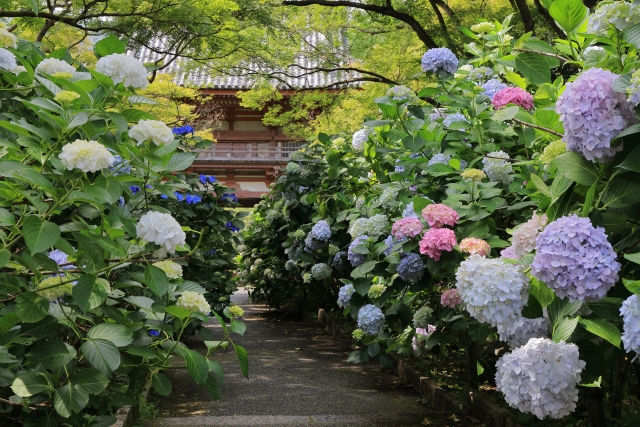
The precincts of Kyuan-ji Temple offer a harmonious blend of historically significant buildings and beautiful gardens. The temple has a tower gate designated as a national important cultural property, a main hall, an Amida hall, a Yakushi hall, and other halls, each of which enshrines valuable cultural properties. The gardens, which have been developed in modern times, have a unique charm that combines the beauty of a traditional Japanese garden with modern sensibilities.
The beauty of the gate, an important cultural property
Toromon Gate (Important Cultural Property) – This gate has a 5.4-meter frontage and a 3.6-meter depth, and is built with an irimoya (gabled roof) structure with a tile roof. It enshrines a statue of Kongorikishi (Nio). The oldest building in the temple, the tower gate welcomes visitors as the entrance to Kyuan-ji Temple. It is said to have been built around the first half of the 15th century in the middle of the Muromachi period (1333-1573), and its graceful appearance has been described as “the most beautiful tower gate.
The most distinctive feature of the gate is its elegant roofline, which is the result of the “eaves bowing without horizontal lines” technique. This unique architectural technique maintains an exquisite balance between the curves of the roof and leaves a deep impression on the viewer. The “Butsudo” style, in which the Kongorikishi statue, reminiscent of Kamakura period sculpture, is placed behind the central pillar, making the front wider, and the main pillar is raised higher, making the three-room, one-door tower gate appear more grandiose.
The gate was designated a former National Treasure in 1903, and was re-designated a National Important Cultural Property after the war. It still stands majestically facing National Route 423, and continues to convey its historical and aesthetic value to the present day.
Three Gardens and Natural Beauty
Kyuan-ji Temple has three distinctive gardens: the Koku-en Garden, the Pugyo-no-niwa Garden, and the Gusoku-ike Pond, each with its own unique beauty.
The “Kokuu-en” is a garden with a pond and a circular path around a pond called Ban-ji Pond, created by Yoshikuni Araki. The “Banjiza is in the void…” meditation in the main hall. The garden blooms around Kokoro Pond, which extends to the north of the main hall. The small mountain to the east, across the Ryokano-no-michi, which is the approach to the temple, is called “Ajiyama,” and the entire garden is called Kokuji-en. Banji Pond. Pan means “heart,” and this is the so-called Shinji Pond. The floating seat protruding from the pond spring is said to be the seat of Dainichi Nyorai.
The “Garden of Pu-Yuyo” is also called the “Garden of Kyo-yuyo Bodhisattva Yuhka” and is popularly known as the garden created by the believers. This garden is located in the lower part of the corridor connecting the main hall and the Sanjusangdo Hall, and offers a tranquil atmosphere for visitors to calm their minds.
Gusoku-ike Pond is the most famous pond at Kyuan-ji Temple. The “flower funeral,” in which a thousand white, blue, pink, and purple hydrangeas float in Gusoku-ike Pond along the approach to the temple, is a sight that captivates visitors’ eyes and hearts. It is a giant stone floating on the Gusoku Pond. It is a natural stone that looks as if it were a mountain, and its beautiful scenery is one of the highlights of the site.
Cultural Properties and Important Collections
A number of valuable cultural properties, including nationally designated important cultural properties, are preserved at Kyuan-ji Temple. Amida Hall – The hall is a high-floor-style treasure house suitable for the preservation of cultural properties and houses a seated statue of Amida Nyorai (designated as an important cultural property), a standing statue of Yakushi Nyorai (designated as a tangible cultural property by Ikeda City), a painting of Nirvana in color on paper, the Kuanji Engi, a statue of Gyoki, a statue of Kenjitsu Shonin, and other items.
Of particular note is a wooden seated statue of Amida Nyorai, formerly housed in Anyo-ji Temple, the predecessor of Kyuan-ji Temple, which was designated an Important Cultural Property in 1913. The standing wooden statue of Yakushi Nyorai, the oldest Buddhist statue in Ikeda City, was designated a Tangible Cultural Property of Ikeda City in 1978.
The precincts of the temple are also home to a pagoda and the Shariden Nirvana Hall, a cenotaph for the repose of bones in which a 6.4 meter high stone statue of the reclining Buddha is enshrined, and this gigantic reclining statue makes a deep impression on visitors. Other important cultural assets include an Edo period nirvana painting in color on paper by Ooka Shunto and a Kuan-ji temple history.
Visiting and Worship Information
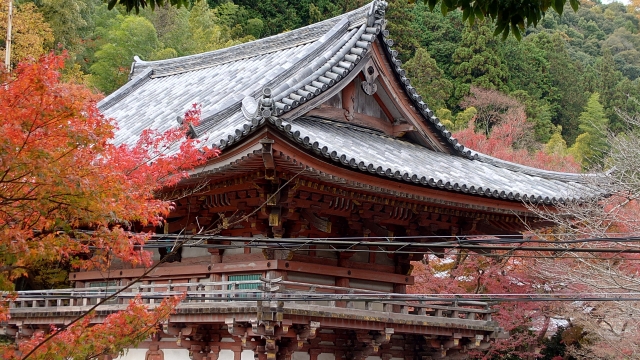
Kyuan-ji Temple welcomes worshippers year-round and offers a tranquil mountain setting for a peaceful visit. The temple grounds are spacious and wheelchair-accessible, with wheelchair access to the pagoda (but not to the main hall, Mikageido, etc.). It is important to observe temple etiquette when visiting the temple and to walk around the grounds quietly.
Worship Etiquette and Manners
As a temple of the Koyasan Shingon sect of Buddhism, Kyuan-ji Temple has a set of rules for worshipping based on Buddhist teachings. First, bow when passing through the gate, and remove your hat to show respect while on the temple grounds. In the main hall of the temple, visitors should bow their palms to the main deity, Senju Kannon Bosatsu (Thousand-armed Goddess of Mercy), and worship with all their hearts.
When praying at each hall, ring the bell and then put your hands together in silent prayer, expressing your wishes and gratitude. Mikado (Hensho-Den) – At the site of the hermitage where Kukai (Kobo-Daishi) stayed during his stay in Japan, and where a statue of Kobo-Daishi and the tablets of emperors related to him, such as Emperor Shomu, are enshrined, it is especially important to pay homage to Kobo-Daishi.
Photography is generally allowed in the temple grounds, but photographing inside the halls or Buddhist statues may be prohibited. Also, please be sure to behave quietly so as not to disturb other worshippers.
Flowers of the Four Seasons and Annual Events
Kyuan-ji Temple is known as a “temple of flowers,” and visitors can enjoy a variety of flowers and trees throughout the four seasons, including peonies and azaleas in spring, hydrangeas and water lilies in early summer, autumn leaves in fall, and sasanquas and waxwings in winter. Particularly famous is the “Ajisai Ube (Hydrangea Garden)” from mid-June to early July, which has become a popular spot in recent years because the hydrangeas floating on the pond named “Ajisai Ube” are fantastic and Instagram-worthy.
In spring, the azaleas and buttons bloom throughout the temple grounds, and the azaleas in front of the main hall in particular create a spectacular sight. During the fall foliage season, Kyuan-ji Temple is also a wonderful place to view the autumn leaves. There are not many people, and the autumn leaves here are bright red and very vivid, and are appreciated as having a Kyoto-like atmosphere.
As for annual events, the third Sunday of November, Maple Blossom Festival Purple Lantern Grand Gomaku (Gomaku-o-matsuri) is held and attracts many worshippers. On New Year’s Eve, the temple bell tolling is held from 23:45 to 2:00 the next day, and all who wish to do so are welcome to strike the bell, thus enjoying a special atmosphere during the year-end and New Year’s holidays.
Shugyo experience and sutra chanting
Kyuan-ji Temple offers shugyo (ascetic practice) experiences open to the general public, allowing visitors to quiet their minds and experience Buddhist teachings. The monthly Shabutsu (Buddhist sutra) practice session on the 10th of each month from 10:00 to 12:00, with a participation fee of 1,500 yen, is held regularly, offering the experience of aligning the mind while drawing the image of the Buddha.
Shakyo and Shabutsu are not just copying letters or pictures, but putting one’s heart and soul into each letter and each stroke allows one to leave the hustle and bustle of daily life behind and enjoy a moment of tranquility. Even beginners can participate easily, and instruction is provided with great care, so those interested in Buddhism are encouraged to try it.
Other activities such as strolling around the vast temple grounds, sutra copying, and Buddhist sutra copying are also available, so we recommend that you contact the temple in advance for more details.
Access and Usage Information
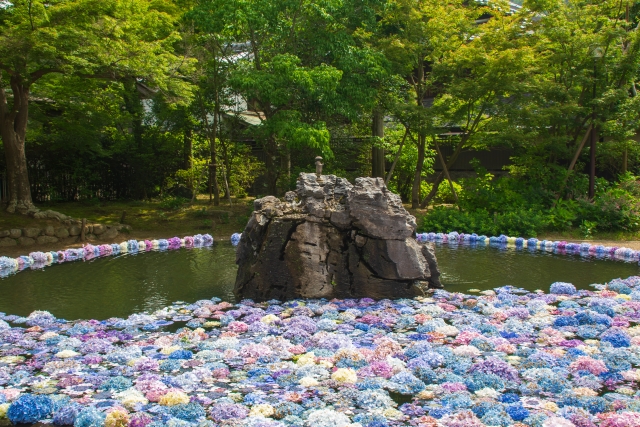
Kyuan-ji Temple is located in the mountains of Ikeda City, Osaka Prefecture, and is accessible by both public transportation and private vehicles. Although it is necessary to take a bus from the nearest station, you can enjoy the surrounding area, including its rich natural environment. It is recommended that visitors check access and worship information before visiting the temple.
Transportation Access
By public transportation, a 15-minute ride on the Hankyu Bus from Hankyu Ikeda Station to Kyuan-ji Temple. Take the Hankyu Bus [26] bound for Kiboigaoka 4-chome, etc. The fare is 250 yen and it takes about 18 minutes to get to the Kyuan-ji bus stop. The frequency of buses is about one or two per hour, so it is recommended to check the bus schedule in advance.
For access by private car, take the Hanshin Expressway No. 11, 3 km straight from the Kibe No. 1 Exit or the Shin-Meishin Expressway, 3 km from the Minoh and Doromi Exit in the direction of Ikeda. Located approximately 8 km from Itami Airport and 20 km from JR Shin-Osaka Station, the hotel is easily accessible from major cities in the Kansai region.
It is within walking distance of the nearest Fushio Hot Springs, Fushio Onsen Fushio Onsen Fushio Oukaku – about 300m (about 4 minutes on foot), so it is possible to visit together with the hot springs.
Hours of Adoration, Fees, and Parking Information
Kyuan-ji Temple is open from 9:00 to 16:00, with no holidays. Admission to the temple grounds is generally free, but a 300 yen entrance fee is required. A separate fee may be charged during special visits to the temple.
Parking is available (60 cars) and is free of charge (parking available). There is a free parking lot for visitors. The capacity is sufficient for about 100 cars, and some reviewers say that it is better to go by car because parking is free if you are driving.
During popular times of the year, such as when the hydrangeas are at their peak, the parking lot is almost full by 10:00 a.m., so we recommend that you visit early. Credit cards are not accepted, and e-money/smart phone payments are not accepted, so cash payment is required.
<Address: 697 Fuseo-cho, Ikeda-shi, Osaka 563-0011
Reference site
Kyuan-ji Temple Official Website: https://kyuanji.jp/
Kyuan-ji Temple (Ikeda City) – Wikipedia: https://ja.wikipedia.org/wiki/久安寺_(Ikeda City)



